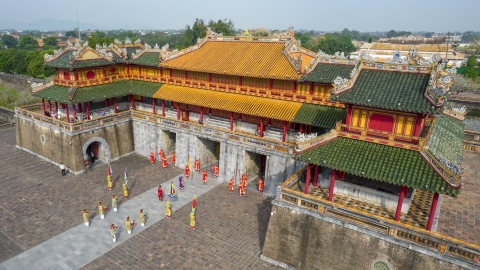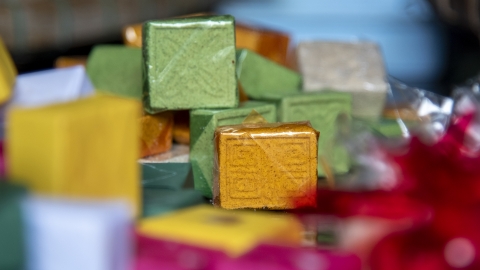Located in the ancient land of Hue, Hachi homestay is located in the middle of a grapefruit garden in the ancient village of Thuy Bieu, about 7 km from Truong Tien bridge. This homestay has been introduced by foreign architectural magazines such as Inhabitat, ArchiDiaries, Designboom for its unique architecture and the attraction of nature from the fragrant grapefruit garden. This combination has brought a very unique beauty to Hachi homestay.
The use of reclaimed wood collected from the structure of old demolished buildings to create all wooden structures, doors, windows and furniture… is one of the highlights of this place and at the same time makes Hachi homestay one of the names representing the trend of sustainable architecture and environmental protection.
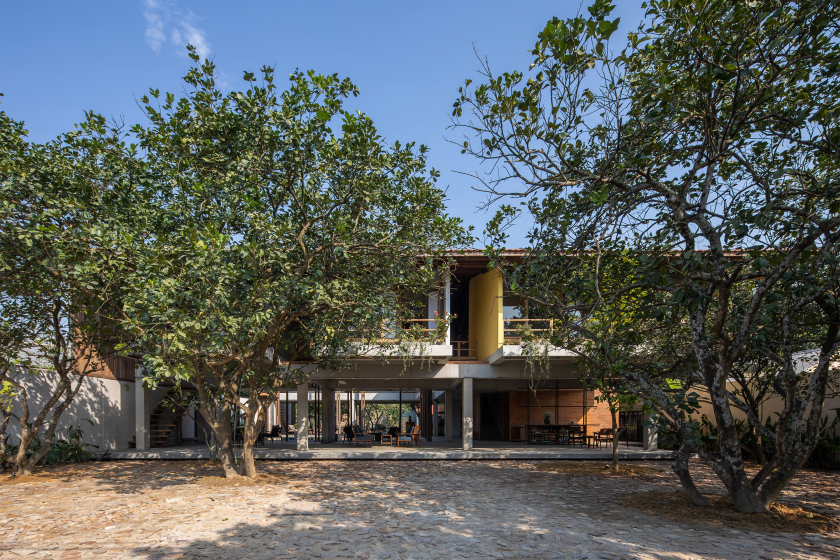
Hachi Homestay has been introduced by foreign architectural newspapers such as Inhabitat, ArchiDiaries, Designboom for its unique architecture.
From recycled materials to unique architectural complexes
Mr. Nguyen Huu Son Duong, homestay owner, said: "The design emphasizes simplicity and rusticity with many types of local, natural materials combined together such as: natural wood for both the house frame and interior furniture, natural stone, granite, bricks, and baked tiles."
He said the architects combined recycled wood with materials such as concrete, bricks, and terrazzo, and used the natural colors of the materials to blend with the peaceful color palette of the garden to bring a peaceful atmosphere to the space. The design of Hachi homestay is also shaped by blurring the boundaries between the spaces inside and outside the house. Despite its innovative and modern architectural features, Hachi homestay still carries within it the traditional breath of the poetic nature of Hue.
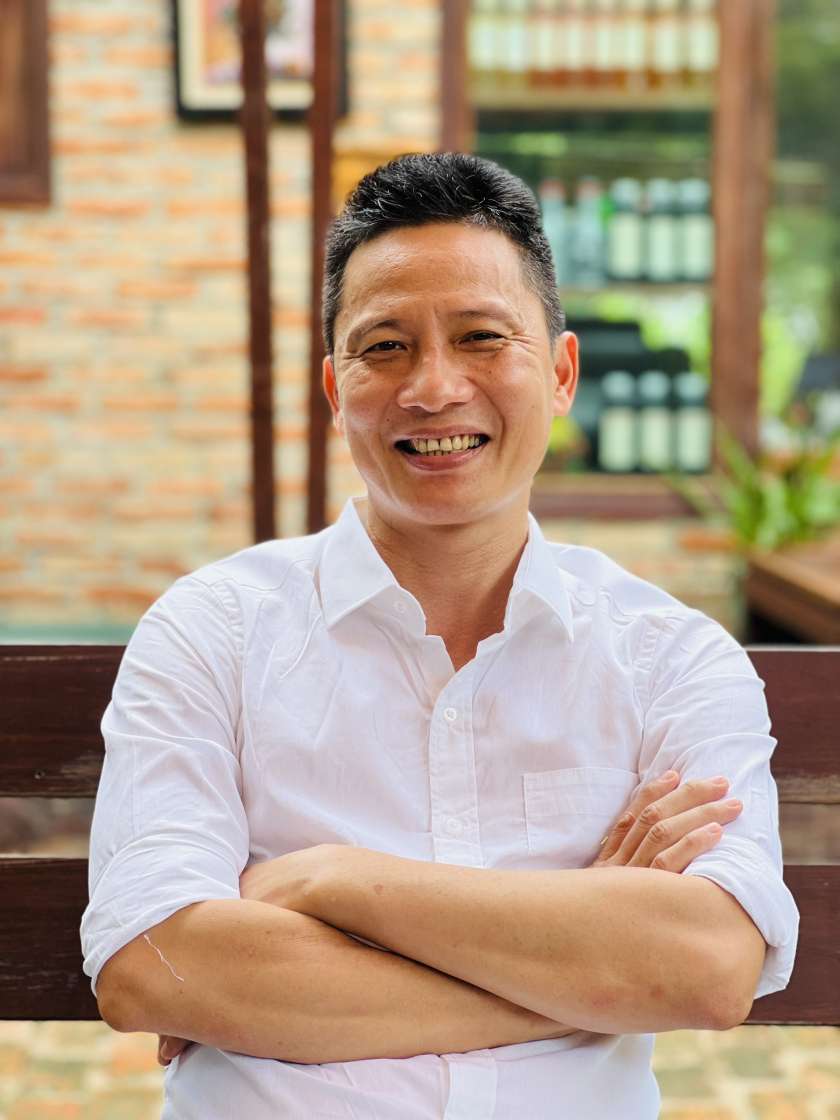
Mr. Nguyen Huu Son Duong, owner of Hachi Homestay
"Garden house" - the typical beauty of Hue
Hachi homestay welcomes visitors to an open space connected to the surrounding quiet grapefruit garden. This place is surrounded by the beautiful winding Huong River upstream before flowing into the city center. Hachi's architecture carries the characteristics of Hue. From folk houses to pagodas, temples in religious architecture to palaces and mausoleums in royal architecture, all are associated with the garden element. Houses and gardens here are always attached to each other regardless of the space, large or small, and are called by a very rustic term: garden house. The architects who created the house have opened up the width and depth of the space, helping visitors relax and immerse themselves in the countryside surrounded by nature of the ancient city of Hue.

Hachi's architecture carries the characteristics of Hue garden houses.
The house is designed with a special U-shaped layout, separate functional spaces are combined or separated in a 115 m2 area to ensure maximum privacy as well as create diversity for many different types of common spaces. Guests can experience the tranquility in private spaces, or participate in many different activities in the common spaces outside.
The common area includes a living, dining and kitchenette area connected to a veranda along the main facade. In addition, the bedrooms on the upper floor are designed to provide privacy and a soothing atmosphere by the surrounding natural stone wall, creating inner gardens for each space. And no matter which room type you choose, you will have a view of the green grapefruit garden and a veranda or balcony to sit and enjoy the view and read books.

The house is designed with a special U-shaped layout, separate functional spaces are combined or separated.
The house is created by human hands and becomes a part of nature.
And the wooden mezzanine illuminated by the skylight on the roof is the family library and archive. This will be an interesting experience for visitors when reading a book near the small window and enjoying the grapefruit scent below. The empty spaces along with the semi-open wooden slat design of the facade help increase natural ventilation along the length of the house as well as minimize the intensity of light and the rising temperature of the harsh Central region. And all the spaces of the house are covered by a large sloping roof to adapt to the harsh sunlight in the summer and the heavy rain in the winter.
"Hue is a city with many long rainy days in winter, so collecting rainwater from the roof and yard into an underground water tank for use in the summer is a convenience of the homestay. The house is designed to blend with nature instead of creating closed spaces to withstand the weather," said Mr. Duong.
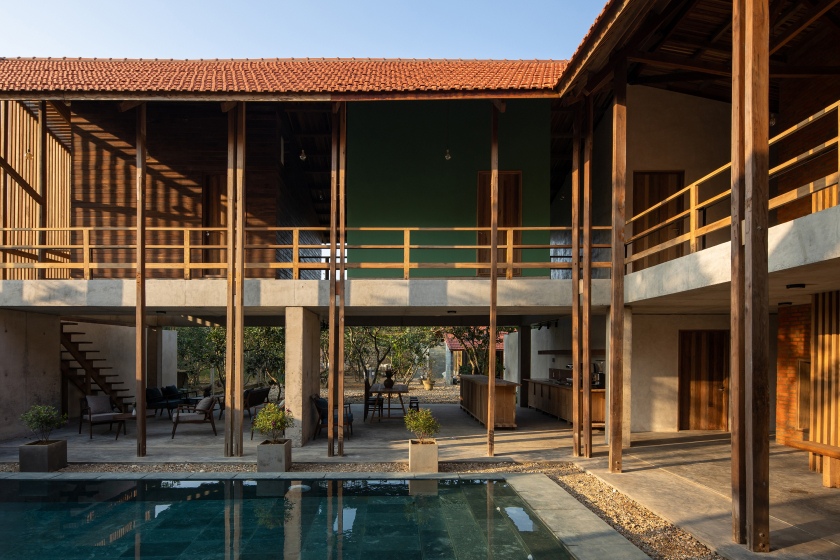
And all the spaces of the house are covered by a large sloping roof to adapt to the harsh sunlight in summer and heavy rain in winter.
Thanks to the open spaces that allow natural ventilation, the house seems to become a part of the garden. The open nature of the architecture in Hachi creates a relaxing and tranquil atmosphere as people are brought closer to the natural scenery of the garden. Hachi Homestay becomes a place where all the noise and bustle of the city retreats behind to give visitors a quiet, fresh space.

Thanks to open spaces that allow natural ventilation, the house seems to become part of the garden.
In addition, the large yard in front of Hachi homestay is extremely suitable for outdoor parties: birthday parties, BBQ parties with friends and relatives.
In addition to the wonderful architecture, Hachi homestay with its green and quiet space, visitors will be able to experience meditation or yoga exercises to relax their minds with a soul-nourishing treatment so that visitors have the opportunity to return inside to learn about the movement of consciousness and life. In particular, every week Hachi homestay organizes experiences of making banh loc, che bot loc and che grapefruit to help foreign visitors get closer to Vietnamese culinary culture and Vietnamese visitors can also return to the traditional beauty of their homeland.






















